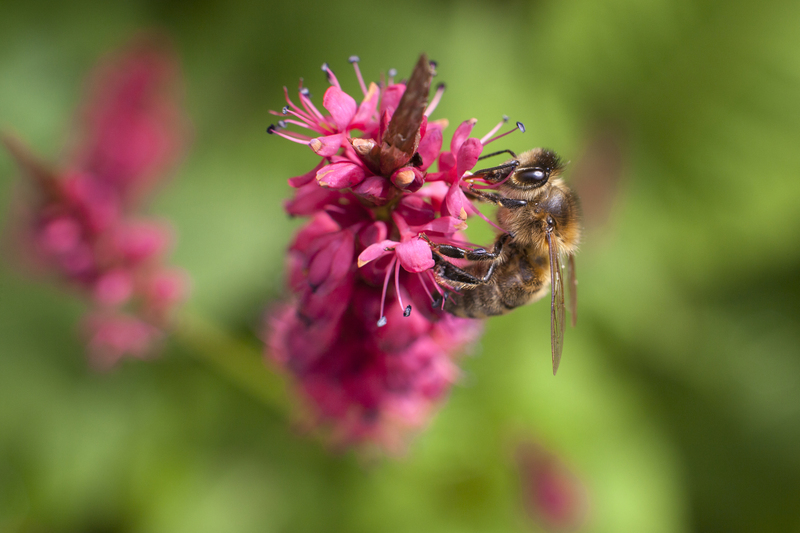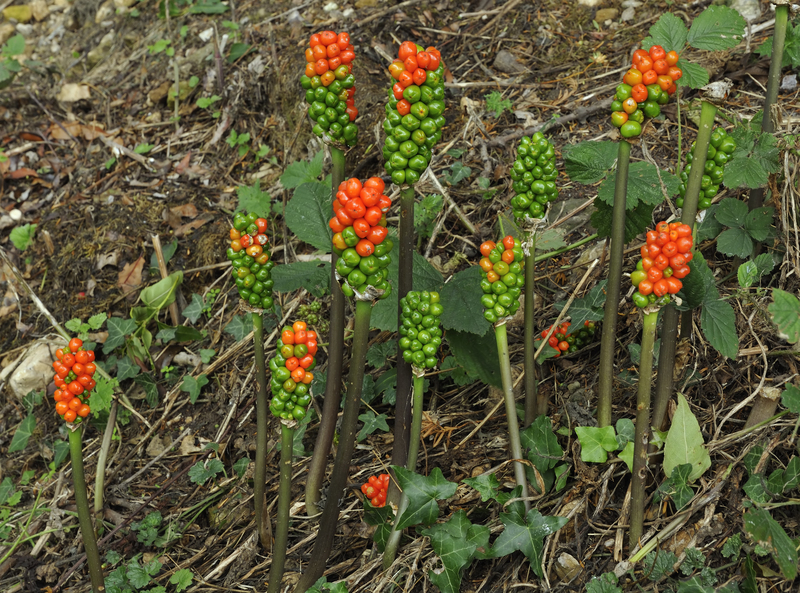Harnessing Nature: Gardening as a Tool for Climate Action
Posted on 04/09/2025
Climate change is arguably the defining challenge of our era. As the globe faces unprecedented environmental shifts, from rising temperatures to increased natural disasters, solutions both large and small are urgently needed. While international policies and technological innovations are vital, it is equally important to recognize the transformative power of individual and community action. One practical, accessible, and powerful approach lies quite literally at our doorstep: gardening as a tool for climate action.
Understanding the Connection: Why Gardens Matter for the Climate
On the surface, tending a garden may seem like a modest activity. Yet, gardens play an outsized role in addressing climate change. They act as carbon sinks, foster biodiversity, reduce urban heat, and promote sustainable living--all while supplying fresh food and enhancing mental well-being. To harness nature effectively, it is important to understand these multiple benefits and integrate climate-smart gardening practices.
How Gardening Fights Climate Change
- Absorbing Carbon Dioxide: Plants absorb CO2 through photosynthesis, helping to remove greenhouse gases from the atmosphere.
- Reducing Food Miles: Home-grown produce reduces the need for long-distance transportation, which is a major source of emissions.
- Improving Urban Microclimates: Gardens increase shade and release moisture, cooling cities and decreasing energy use for air conditioning.
- Enhancing Soil Health: Healthy soils store more carbon and support diverse life, from microbes to pollinators.
- Promoting Biodiversity: A diverse garden supports species that are critical for ecosystem resilience and function.

Climate-Friendly Gardening Practices
Transitioning from conventional gardening to climate-positive gardening involves a set of intentional choices. Implementing these practices can significantly amplify your garden's power as a tool in the fight against climate change.
1. Composting for Carbon Sequestration
Composting is among the most eco-friendly activities a gardener can pursue. By recycling food scraps, yard waste, and other organic materials into nutrient-rich compost, you divert waste from landfills--where it would otherwise decompose anaerobically and emit methane, a potent greenhouse gas.
- Improves soil structure and fertility
- Enhances soil's ability to store carbon
- Promotes healthy root growth and water retention
2. Reduce, Reuse, and Recycle Garden Supplies
Reducing reliance on new materials lessens your carbon footprint. Choose recycled pots, reused lumber, and locally sourced compost.
- Repurpose containers and planters
- Use reclaimed wood for raised beds
- Opt for organic mulches over synthetic materials
3. Grow Native and Adaptive Plants
Selecting native plants or those adapted to your region's climate can greatly reduce water consumption, fertilizer, and pesticide use.
- Enhances local biodiversity
- Supports pollinators and beneficial insects
- Requires less maintenance and resources
4. Water Wisely
Gardens can be designed to conserve water and minimize runoff, further supporting climate resilience. Efficient irrigation techniques include:
- Drip irrigation or soaker hoses
- Rainwater harvesting systems
- Applying mulch to reduce evaporation and suppress weeds
5. Minimize or Eliminate Chemical Use
Heavy reliance on synthetic fertilizers and pesticides harms beneficial organisms and contributes to greenhouse gas emissions during production and use. Organic gardening practices, such as crop rotation and integrated pest management, foster a thriving, self-sustaining ecosystem.
Boosting Biodiversity: Gardens as Habitats for Wildlife
A climate-resilient garden is a haven for wildlife. By creating layers of habitat--trees, shrubs, perennials, groundcovers--you enrich the ecosystem and support vital pollinators, birds, and small mammals.
Wildlife-Friendly Features
- Plant a variety of nectar-rich flowers to attract bees and butterflies.
- Install birdhouses, bee hotels, and log piles for shelter.
- A small pond or water feature supports amphibians and insects.
- Use hedgerows and dense plantings for cover and nesting.
Gardening for climate action isn't just about climate--it's about ecosystem health and resilience, of which biodiversity is a critical component.
Edible Gardening: Growing Food for a Healthier Planet
Raising fruits, vegetables, and herbs at home is not merely a rewarding pastime--it is a foundational component of climate-positive gardening. Reducing reliance on industrial agriculture, which is commonly associated with deforestation, habitat destruction, and high emissions, can have a profound impact.
Benefits of Edible Gardens for Climate Action
- Reduces Transportation Emissions: Homegrown food doesn't require shipment over long distances.
- Minimizes Packaging Waste: Garden produce has zero or minimal packaging needs.
- Supports Organic Practices: Growers control inputs and can avoid harmful chemicals.
- Encourages Seasonal and Local Eating: Adapting diets to available produce further decreases your carbon footprint.
Tips for Climate-Smart Edible Gardening
- Practice crop rotation to enhance soil health.
- Utilize companion planting to deter pests naturally.
- Save seeds for future planting to preserve biodiversity.
- Compost all organic waste to "close the loop" in your food system.
The Power of Trees and Perennials in Climate-Positive Gardens
Trees, shrubs, and long-lived perennials form the backbone of a climate resilience garden. Not only do they absorb and store more carbon for longer periods, but they also create shade, reduce wind, and provide vital resources for local wildlife.
Why Planting Trees is Climate Action
- Long-term Carbon Storage: Mature trees can store tons of carbon.
- Energy Savings: Deciduous trees provide summer shade and let in winter sunlight, reducing energy needs.
- Erosion Control: Roots stabilize soil and prevent erosion.
Choosing the Right Perennials
Perennial vegetables (such as asparagus and rhubarb), berries, and fruit trees yield produce year after year, requiring less annual soil disturbance and reducing the garden's carbon footprint.
Community Gardening: Scaling Up Climate Action
Harnessing nature for climate action gardening is even more impactful at the community level. Community gardens bring people together, pool resources, and transform underutilized land into productive, resilient spaces.
Benefits of Community Gardens
- Food Security: Shared gardens provide access to fresh, healthy foods.
- Urban Greening: Increases vegetated areas, absorbs rainwater, and cools microclimates.
- Education: Spreads climate and sustainability knowledge among participants.
- Social Resilience: Builds stronger, more connected neighborhoods.
How to Start a Community Climate Garden
- Organize a group and identify available land (public parks, school yards, vacant lots).
- Plan and design the garden with climate resilience and biodiversity in mind.
- Install compost bins and water-harvesting systems.
- Host workshops on organic gardening and climate action strategies.
Gardening Beyond the Backyard: Urban and Vertical Solutions
Urbanization challenges traditional gardening, yet city dwellers can still harness nature for climate mitigation. Rooftop gardens, vertical planters, and green walls transform concrete jungles into lush, productive oases.
Advantages of Urban Climate Gardening
- Reduces the urban heat island effect by cooling roof and wall surfaces
- Improves air quality and reduces pollutant levels
- Utilizes underused spaces for productive purposes
- Engages more people in climate-resilient gardening practices

Tips for Maximizing Your Garden's Climate Impact
Even small changes in your gardening routine can make a significant difference for the climate. Here are key strategies to harness the full power of your garden for climate action:
- Design for Diversity: Mix annuals, perennials, shrubs, and trees to create layered, resilient ecosystems.
- Grow Carbon-Rich Plants: Fast-growing species like bamboo and willow capture more CO2 per year.
- Go Peat-Free: Use compost and coir rather than peat moss, whose extraction destroys carbon-rich ecosystems.
- Implement No-Dig Gardening: Maintain soil structure, reduce erosion, and protect soil carbon.
- Share and Educate: Exchange seeds, plants, and climate gardening tips with friends, neighbors, and local groups.
Conclusion: Cultivating Hope, One Garden at a Time
In a world grappling with the scale and urgency of climate change, it's easy to underestimate the combined impact of individual efforts. Yet, history shows that profound transformations often begin small--at kitchen tables, in neighborhoods, and, yes, in backyard gardens.
By harnessing nature through gardening, anyone can contribute to the global solution. Whether you are tending a few pots on a balcony, revitalizing a neglected community lot, or transforming your yard into a mini-forest, your efforts compound and inspire others. Gardening for climate action is practical, local, and empowering--offering tangible benefits for the environment, for communities, and for generations yet to come.
Start today: Plant a seed, compost your scraps, and watch as your garden becomes a beacon of hope and a force for climate action. The earth, and future generations, will thank you.

